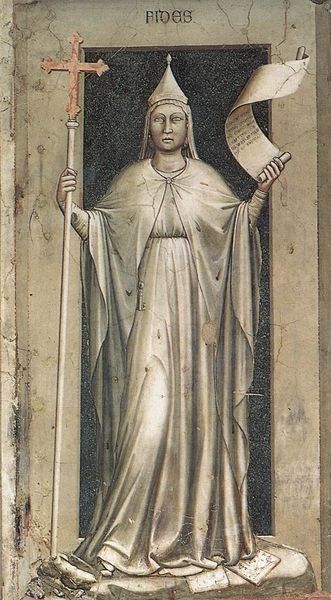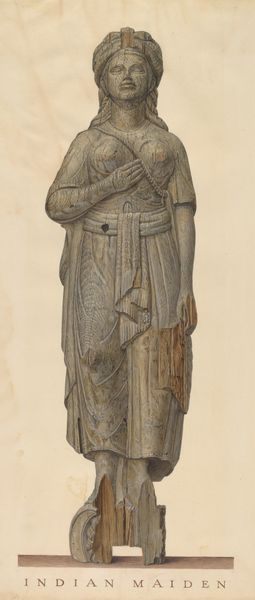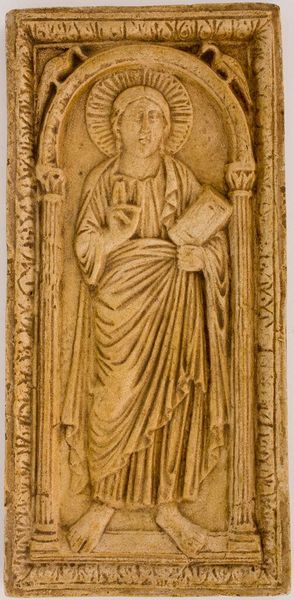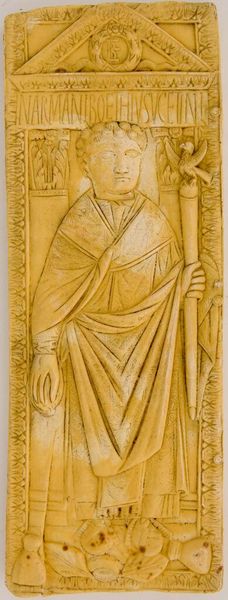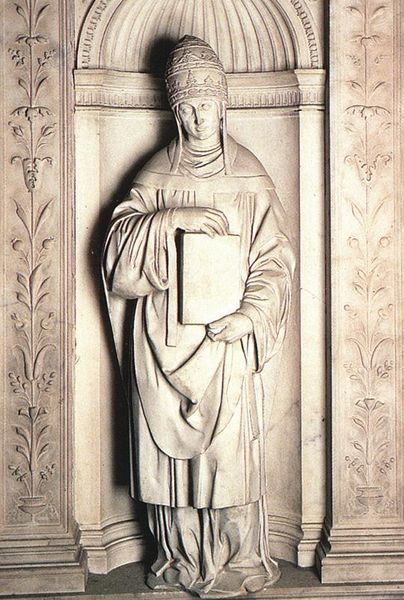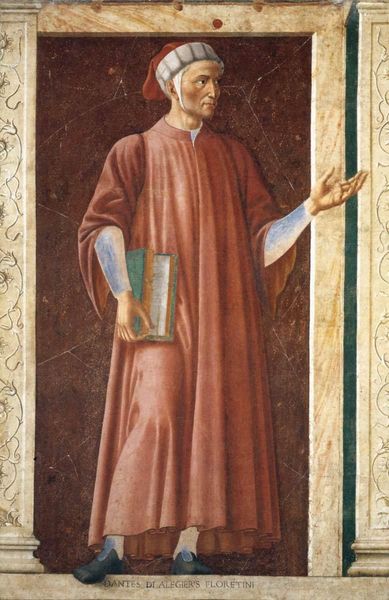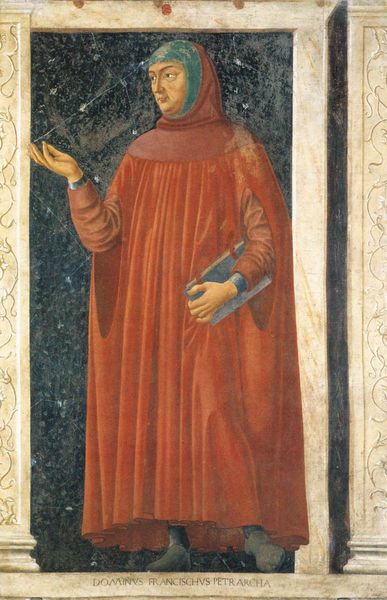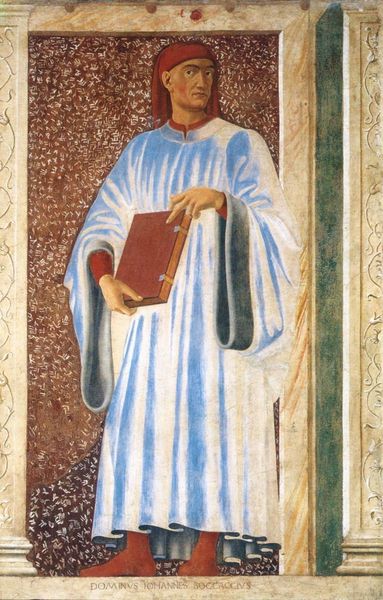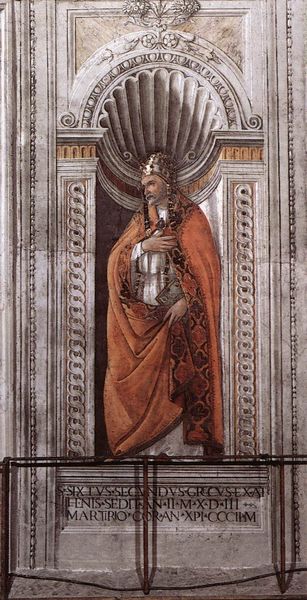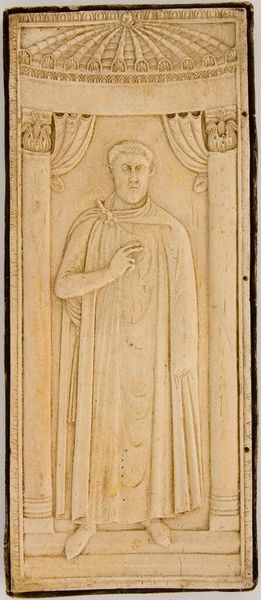
tempera, fresco
#
portrait
#
medieval
#
tempera
#
figuration
#
fresco
#
history-painting
#
italian-renaissance
Copyright: Public domain
Giotto painted Temperance here in the Scrovegni Chapel using the fresco technique. Pigments are applied to a thin layer of wet plaster, meaning the painting becomes an integral part of the wall. The subdued palette, dominated by earth tones, emphasizes the figure's humility, a key aspect of temperance. It’s interesting to note how the very process of fresco – demanding patience and precision, and the careful layering of pigment into plaster – mirrors the virtue it represents. The act of creating a fresco, and especially one of this scale, was a large undertaking that involved many hands. While Giotto designed and executed the final painting, assistants would have prepared the walls, mixed the plaster, and ground the pigments. Temperance and the other virtues were painted in a time of rapid social change in Europe, with a merchant class eager to display their wealth and piety. Consider the labor, the materials, and the social context that all went into Temperance. It all deepens our appreciation for the work and blurs any lines we might draw between art, craft, and the conditions of their making.
Comments
No comments
Be the first to comment and join the conversation on the ultimate creative platform.
